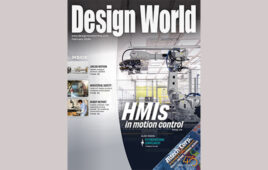The robots are free!
 One of the trends that’s been apparent at the last few industrial trade shows I’ve attended is that industrial robots are being unleashed from their metal prisons. It wasn’t long ago that the only examples of robots that you’d see—whether on the show floor or on an actual manufacturing plant floor—were those disembodied arms working safely behind steel cages, moving boxes from one conveyor to the next, safely out of the way of humans.
One of the trends that’s been apparent at the last few industrial trade shows I’ve attended is that industrial robots are being unleashed from their metal prisons. It wasn’t long ago that the only examples of robots that you’d see—whether on the show floor or on an actual manufacturing plant floor—were those disembodied arms working safely behind steel cages, moving boxes from one conveyor to the next, safely out of the way of humans.
At last month’s PackExpo Show in Las Vegas, it was interesting to see how robots were being displayed at the Yaskawa booth. Areas surrounding robots weren’t simply caged off, but had many embedded sensors to detect when an employee approached the workspace. Tripping a sensor meant, in some cases, that a particular robot might stop (depending on its function). But more often, different robots would merely slow down to 20 or 50 or 80% of their normal speed.
So, are the robots safer? Well, yes, but more accurately, they’re simply smarter. Software is figuring out what safety protocols are needed. This fresh approach to how humans and robots interact is really being driven by productivity demands. It’s sensors, vision and software all working in harmony to boost output on the factory floor while not compromising on the safety aspect.
The RoboBusiness Conference in San Jose also showed another side as to why robots are being freed up to collaborate more. Soft robotics is in—these can be robots with compressed air filled limbs or even squishy, gel- or fluid-filled end effectors that won’t injure a human, should they make contact with a worker. (Think of Baymax in the recent film Big Hero 6.)
Soft robots are more pliable (providing the safety aspect), but they can be more inexpensive, too. Their drawback is that they won’t provide a high level of accuracy anytime soon, but as sensing continues to advance, I wouldn’t be surprised to see this become one of the fastest growing areas in robotics in the coming years.
The 2015 World Robot Statistics report, issued by the International Federation of Robotics, indicates that by 2018, global sales of industrial robots will on average grow year on year by 15%—the numbers of units sold will double to around 400,000 units. Five major markets represent 70% of the total sales volume: China, Japan, the U.S., South Korea and Germany.
Last year in the U.S., the number of installed robots increased by 11% to about 26,000 units—ranking it third in the world. Production industries here deploy a mere 164 industrial robots per 10,000 employees. But the country is automating its economy at high speed. So expect to see more robot coworkers in the very near future—but don’t expect to see them behind a metal screen.
Filed Under: DIGITAL ISSUES • DESIGN WORLD





Tell Us What You Think!